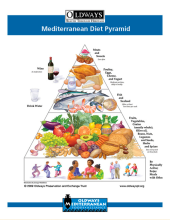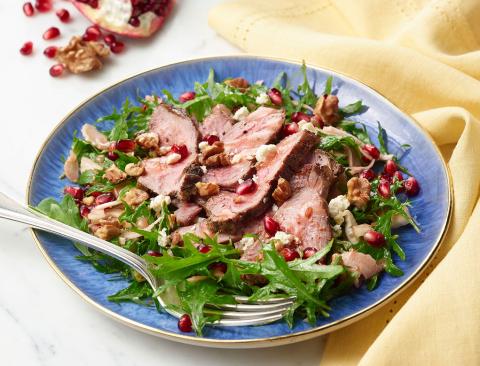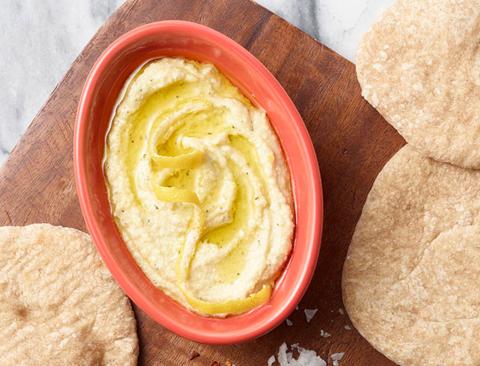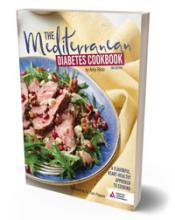The Mediterranean “diet” is known as one of the healthiest in the world because it is not truly a diet, but rather a lifestyle that is based on a variety of healthy foods, allows for occasional indulgences, and includes shared physical and social activities. Because of the wide variety of food choices included and the flexibility, a growing number of people have been able to adapt this lifestyle and are seeing positive results.
Defining the Mediterranean "Diet"
From my time living and working in various countries, I have learned that three factors hold true throughout the Mediterranean region:
- Food is treated as medicine.
- Moderation is key.
- An active physical and social lifestyle is mandatory.
Since these elements have been practiced since antiquity in the now twenty-seven countries in the region—countries as diverse as France, Israel, Egypt, and Morocco—my definition of “The Mediterranean Diet” is a modern eating plan based upon the traditional diet and lifestyle of the countries bordering the Mediterranean Sea.
Many of the recipes, ingredients, and traditions celebrated in the Mediterranean-style eating pattern have been around for centuries, but they are easily adaptable into today’s busy lifestyle and suitable for modern palates. There are no fads, special “diet” foods, or modern technology needed to achieve successful results.
What is the Mediterranean-style eating pattern?
The Mediterranean eating pattern emphasizes plant-based foods such as vegetables, beans, whole grain, fruits, nuts and seeds, and plant-based oils, especially olive oil. These foods make up the base of the Mediterranean food pyramid and most meals should be based around these foods.
In Mediterranean cooking, salt takes a back seat to herbs, spices, and aromatic vegetables like garlic to add flavor without extra sodium.
Fish and seafood are the most prominent animal products in this eating pattern, followed by dairy (mainly yogurt and cheese), eggs, and poultry. Red meat, such as from beef and lamb, is eaten only occasionally. Sweet treats and added sugars are also eaten rarely.
Lifestyle is also an important factor in the Mediterranean-style eating plan—lifestyle factors such as physical activity and enjoying meals with others form the foundation of the Mediterranean food pyramid, since they are just as important as the food.
Evidence-Based Nutrition
Intrigued by the high life expectancy and lower rates of illness and disease in the region, American and international scientists and doctors have been researching the Mediterranean-style eating pattern for more than half a century, and the benefits of the Mediterranean-style eating pattern and lifestyle have been documented. For people living with or at risk of diabetes, following the diet has thus far been linked to:
- reducing risk of diabetes
- lowering A1C
- lowering triglycerides
- reducing risk of heart attacks and strokes
The way people traditionally eat in the Mediterranean region is naturally lower in saturated fat, higher in unsaturated fats, and focuses on high fiber foods such as vegetables, fruits, legumes, and whole grains. Each of these factors is generally recognized as beneficial to health, so it makes sense that combining these factors can result in positive health outcomes, especially for people with diabetes.
The combination of a lifetime of enjoyable meals that taste great and just happen to be good for you may seem too good to be true! My mission is to illustrate how enjoyable, delicious, and effective this eating pattern can be so more people can enjoy good food and good health together. To help get you started, here are a couple of my favorite recipes from the cookbook to make a balanced and delicious Mediterranean meal:
I love this salad because it offers such a wide range of nutrients and flavor. It reminds me of the “Monday salads” that are eaten in Italy– a way to repurpose the leftovers from the large Sunday meal. Sometimes these dishes are just as loved as the original feast itself.
This dip is a bright and zesty cousin of hummus. Delicious slathered on fresh bread or raw veggies and drizzled with a high-quality extra-virgin olive oil, it is the perfect example of how quick and easy nutritious food can be to make.
Amy Riolo is author of The Mediterranean Diabetes Cookbook. You can order a copy of the new edition directly from the American Diabetes Association by clicking here.


















